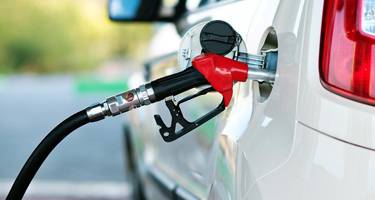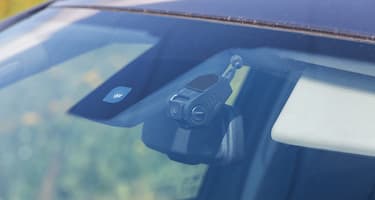Australia is a vast and diverse country, featuring everything from open coastal roads to congested inner cities. Australians do their fair share of driving and with that can come the risk of mishaps - from an unexpected flat battery to accidentally locking your keys in the car.
That’s why roadside assistance can play a role in making sure you have someone to call in case something goes wrong.
Budget Direct has gathered data from over 1,000 participants aged 18 and over, to provide an in-depth analysis of Australian driving habits.
We also compared our results to Budget Direct Roadside Assistance Survey & Statistics from 2022 to see how trends are changing over time.
Quick Stats
- There were 80% of respondents who have previously experienced a breakdown or vehicle malfunction.
- A quarter of Australians surveyed said they were extremely uncomfortable changing a car tyre on their own.
- Half of all participants were most likely to fuel up their vehicle in the last quarter of a tank.
- Over a quarter of respondents have replaced their car battery within the last 1-2 years.
Roadside Assistance Survey Results
When was the last time you experienced a breakdown or a vehicle malfunction when using your car?
18-22 |
23-27 |
28-32 |
33-37 |
38-42 |
43-47 |
48-52 |
53-57 |
58-62 |
63-67 |
68-70 |
|
|---|---|---|---|---|---|---|---|---|---|---|---|
<12 months |
20.5% |
28.0% |
24.4% |
19.7% |
17.8% |
19.6% |
16.2% |
19.0% |
22.3% |
20.2% |
18.6% |
1-2 years |
28.2% |
24.0% |
15.7% |
12.8% |
15.9% |
22.6% |
21.0% |
12.6% |
8.5% |
11.9% |
7.0% |
2-3 years |
7.7% |
9.0% |
13.9% |
12.0% |
17.8% |
17.7% |
18.1% |
8.4% |
10.6% |
9.5% |
9.3% |
3-4 years |
2.6% |
7.0% |
11.3% |
5.1% |
7.5% |
2.9% |
6.7% |
5.3% |
11.7% |
14.3% |
7.0% |
>4 years |
0.0% |
8.0% |
14.8% |
20.5% |
19.6% |
19.6% |
23.8% |
40.0% |
36.2% |
29.8% |
39.5% |
I’ve never had a breakdown |
41.0% |
24.0% |
20.0% |
29.9% |
21.5% |
17.7% |
14.3% |
14.7% |
10.6% |
14.3% |
18.6% |
There were 80% of Australian respondents who have encountered a breakdown or vehicle malfunction at some point while using their cars. Among these, more than 20% reported experiencing issues in the past 12 months, with the age group of 23 to 27 being the most affected.
On the other hand, 20% of all respondents stated that they have never experienced a breakdown or vehicle malfunction.
Overall, there has been a slight increase in the percentage of drivers experiencing a breakdown or vehicle malfunction on Australian roads since the same survey was conducted in 2022.
Which of these situations has caused a car you were travelling in to be undriveable?
18-22 |
23-27 |
28-32 |
33-37 |
38-42 |
43-47 |
48-52 |
53-57 |
58-62 |
63-67 |
68-70 |
|
|---|---|---|---|---|---|---|---|---|---|---|---|
Flat battery |
26.1% |
48.7% |
40.2% |
40.2% |
47.6% |
47.6% |
60.0% |
45.7% |
52.4% |
55.6% |
45.7% |
Breakdown/mechanical failure |
47.8% |
40.8% |
33.7% |
37.8% |
34.5% |
36.9% |
23.3% |
39.5% |
23.8% |
25.0% |
28.6% |
Flat tyre |
47.8% |
29.0% |
37.0% |
37.8% |
33.3% |
25.0% |
32.2% |
37.0% |
33.3% |
19.4% |
45.7% |
Out of fuel |
13.0% |
9.2% |
15.2% |
12.2% |
8.3% |
8.3% |
8.9% |
9.9% |
3.6% |
4.2% |
8.6% |
Locked out of car |
4.4% |
10.5% |
8.7% |
6.1% |
6.0% |
6.0% |
12.2% |
8.6% |
7.1% |
4.2% |
5.7% |
Other |
0.0% |
4.0% |
2.2% |
1.2% |
4.8% |
3.6% |
8.9% |
2.5% |
9.5% |
18.1% |
14.3% |
*Respondents were able to select more than one response, values may not add up to 100%.
In Australia, the primary reason a car became undriveable for those surveyed was due to a flat battery, impacting nearly 50% of all participants. The second most common reason was a mechanical breakdown, and thirdly, a flat tyre.
Only 17% of our respondents indicated their main reason was due to running out of fuel or being locked out of their vehicle.
How long would you expect a battery to last in a modern car?
18-22 |
23-27 |
28-32 |
33-37 |
38-42 |
43-47 |
48-52 |
53-57 |
58-62 |
63-67 |
68-70 |
|
|---|---|---|---|---|---|---|---|---|---|---|---|
<2 years |
7.7% |
1.0% |
4.4% |
2.6% |
1.9% |
3.9% |
1.9% |
3.2% |
4.3% |
2.4% |
0.0% |
2-4 years |
25.6% |
36.0% |
27.0% |
29.9% |
37.4% |
35.3% |
39.4% |
37.9% |
33.0% |
27.4% |
34.9% |
4-6 years |
25.6% |
31.0% |
45.2% |
41.0% |
27.1% |
39.2% |
32.7% |
28.4% |
43.6% |
50.0% |
39.5% |
6-8 years |
20.5% |
19.0% |
13.9% |
11.1% |
14.0% |
10.8% |
14.4% |
11.6% |
10.6% |
10.7% |
16.3% |
8-10 years |
7.7% |
9.0% |
7.8% |
8.6% |
13.1% |
3.9% |
5.8% |
10.5% |
3.2% |
4.8% |
9.3% |
>10 years |
12.8% |
4.0% |
1.7% |
6.8% |
6.5% |
6.9% |
5.8% |
8.4% |
5.3% |
4.8% |
0.0% |
The highest percentage of the people we surveyed believe that a car battery lasts between 4 to 6 years. This is a shift from last year's results, where the highest percentage of participants estimated the lifespan to be between 2 to 4 years.
In general, car batteries typically last between 1 to 5 years, which corresponds with about 70% of the responses we received. [1]
Only about 3% of participants thought a car battery would last less than 2 years, and 6% believed they would last more than 10 years.
When did you last check your tyre pressure?
18-22 |
23-27 |
28-32 |
33-37 |
38-42 |
43-47 |
48-52 |
53-57 |
58-62 |
63-67 |
68-70 |
|
|---|---|---|---|---|---|---|---|---|---|---|---|
Within the past six months |
43.6% |
44.0% |
51.3% |
49.6% |
55.1% |
58.8% |
65.7% |
61.1% |
78.7% |
76.2% |
69.8% |
6-12 months |
25.6% |
27.0% |
23.5% |
31.6% |
23.4% |
25.5% |
15.2% |
22.1% |
14.9% |
15.5% |
16.3% |
1-2 years |
12.8% |
20.0% |
13.9% |
12.8% |
15.9% |
7.8% |
8.6% |
5.3% |
2.1% |
2.4% |
4.7% |
2-3 years |
0.0% |
2.0% |
2.6% |
1.7% |
1.9% |
1.0% |
1.0% |
1.1% |
2.1% |
0.0% |
2.3% |
Over 3 years |
2.6% |
3.0% |
3.5% |
1.7% |
1.9% |
2.0% |
3.8% |
4.2% |
1.1% |
0.0% |
2.3% |
Never |
15.4% |
4.0% |
5.2% |
2.6% |
1.9% |
4.9% |
5.7% |
6.3% |
1.1% |
6.0% |
4.7% |
Nearly 60% of participants reported checking their tyre pressure within the past six months. Of all the age groups, those between the ages of 58 and 62 were the most likely to check their tyre pressure within the past six months.
However, that’s not to say those under the age of 50 aren’t also embracing the task. Almost 44% of 18 to 22-year-olds surveyed have also checked their tyre pressure in the past six months.
Only around 5% of participants reported that they have never checked their tyre pressure.
When did you last replace your battery?
18-22 |
23-27 |
28-32 |
33-37 |
38-42 |
43-47 |
48-52 |
53-57 |
58-62 |
63-67 |
68-70 |
|
|---|---|---|---|---|---|---|---|---|---|---|---|
<12 months |
23.1% |
17.0% |
17.4% |
14.5% |
20.6% |
18.6% |
17.1% |
20.0% |
19.2% |
19.1% |
14.0% |
1-2 years |
15.4% |
24.0% |
30.4% |
24.8% |
29.0% |
29.4% |
34.3% |
19.0% |
18.1% |
26.2% |
23.3% |
2-3 years |
23.1% |
20.0% |
21.7% |
25.6% |
13.1% |
21.6% |
16.2% |
20.0% |
17.0% |
15.5% |
16.3% |
3-4 years |
7.7% |
7.0% |
7.0% |
8.6% |
10.3% |
8.8% |
7.6% |
12.6% |
19.2% |
8.3% |
7.0% |
>4 years |
0.0% |
8.0% |
6.1% |
8.6% |
8.4% |
7.8% |
8.6% |
12.6% |
7.5% |
13.1% |
16.3% |
Never |
30.8% |
24.0% |
17.4% |
18.0% |
18.7% |
13.7% |
16.2% |
15.8% |
19.2% |
17.9% |
23.3% |
Over a quarter of participants surveyed replaced their car battery within the last 1 to 2 years.
When comparing results to the previous survey, there is a reduction in the percentage of respondents who have never changed their car battery, from 32% in 2022 to 17% in 2024.
Those aged 48 to 52 who were surveyed were the most likely to have replaced their battery in the last 1 to 2 years. While respondents aged between 18 and 22 were the most likely to have never replaced their car battery.
Respondents from Western Australia were the most likely to replace their car battery in the last 1 to 2 years, followed closely by Queenslanders. Meanwhile, participants from South Australia were the most likely to have never replaced a car battery.
How comfortable would you be changing a car tyre on your own?
18-22 |
23-27 |
28-32 |
33-37 |
38-42 |
43-47 |
48-52 |
53-57 |
58-62 |
63-67 |
68-70 |
|
|---|---|---|---|---|---|---|---|---|---|---|---|
Extremely uncomfortable |
10.3% |
23.0% |
18.3% |
22.2% |
41.1% |
22.6% |
28.6% |
26.3% |
22.3% |
31.0% |
18.6% |
Uncomfortable |
23.1% |
20.0% |
27.8% |
33.3% |
19.6% |
21.6% |
23.8% |
20.0% |
11.7% |
19.1% |
20.9% |
Neutral |
28.2% |
21.0% |
15.7% |
18.0% |
15.0% |
19.6% |
10.5% |
12.6% |
13.8% |
4.8% |
11.6% |
Comfortable |
23.1% |
24.0% |
27.0% |
19.7% |
17.8% |
23.5% |
21.0% |
27.4% |
26.6% |
20.2% |
30.2% |
Extremely comfortable |
15.4% |
12.0% |
11.3% |
6.8% |
6.5% |
12.8% |
16.2% |
13.7% |
25.5% |
25.0% |
18.6% |
A quarter of Australians surveyed feel extremely uncomfortable changing a car tyre on their own. In contrast, 14% are extremely comfortable with the task.
South Australians and Victorians surveyed were most likely to say they feel extremely uncomfortable changing a tyre on their own. Whereas, Western Australians and Queenslanders surveyed were the most comfortable when confronted with a flat tyre.
For those on the west coast, 19% said they would be extremely comfortable changing a tyre on their own. Across the country, the most confident age group for changing a car tyre were the 58 to 62 year-olds while the least confident age group were those between 38 to 42 years old.
The general consensus is that females are significantly less comfortable changing a tyre on their own compared to males. Only around 18% of females said they were either comfortable or extremely comfortable while 60% of males said they were comfortable or extremely comfortable changing a tyre.
Just over a quarter of respondents in 2022 said they were extremely comfortable changing a tyre on their own, compared to 14% of respondents in 2024.
Have you ever locked your keys in your car or lost your car keys?
Almost a third of respondents said they have locked their keys in their car or lost their car keys. These results are quite consistent regardless of gender where 33% of women answered yes compared to 29% of men.
By state comparison, the highest percentage of individuals locking keys in the car was in South Australia, while the lowest percentage was found in New South Wales.
When are you most likely to fuel up your vehicle?
18-22 |
23-27 |
28-32 |
33-37 |
38-42 |
43-47 |
48-52 |
53-57 |
58-62 |
63-67 |
68-70 |
|
|---|---|---|---|---|---|---|---|---|---|---|---|
On empty or when the fuel light is on |
23.1% |
19.0% |
15.7% |
17.1% |
18.7% |
12.8% |
13.3% |
11.6% |
8.5% |
8.3% |
0.0% |
In the last quarter of the tank |
53.9% |
54.0% |
49.6% |
56.4% |
51.4% |
40.2% |
41.9% |
48.4% |
54.3% |
45.2% |
55.8% |
At half a tank |
10.3% |
11.0% |
15.7% |
8.6% |
12.2% |
16.7% |
17.1% |
14.7% |
17.0% |
19.1% |
18.6% |
At more than half a tank |
2.6% |
1.0% |
4.4% |
4.3% |
3.7% |
7.8% |
5.7% |
1.1% |
6.4% |
4.8% |
2.3% |
Whenever fuel is the cheapest |
7.7% |
11.0% |
9.6% |
12.8% |
11.2% |
18.6% |
17.1% |
17.9% |
11.7% |
19.1% |
18.6% |
Whenever it’s the most convenient |
2.6% |
4.0% |
5.2% |
0.9% |
2.8% |
3.9% |
4.8% |
6.3% |
2.1% |
3.6% |
4.7% |
Almost overwhelmingly, Australians are most inclined to fill up their vehicle in the last quarter of the tank, according to the survey results. Nearly 50% of all participants surveyed said they fill up in the last quarter, compared to 15% at half the tank, and 14% said they fill up when fuel is the cheapest.
Do you know what the air pressure of your car’s tyres should be?
Knowing the optimal air pressure in your car’s tyres is important so as to maintain adequate grip on the road and increase the lifespan of your tyres. Australians appear to be on top of this with 64% of respondents answering yes, they do know the correct pressure levels, while 26% answered no and just over 10% were unsure.
Age also appears to play a factor, with the most knowledgeable category being those aged between 58 to 62 years old. In this age group, 83% of respondents knew what their tyre pressure should be and only 6% were unsure.
By state comparison, Western Australians were the most likely to know their tyre pressure, closely followed by Queenslanders at 69%.





